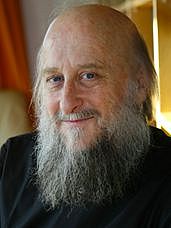
Prof. emer. Roland Buser
Department of Physics
University of Basel
Klingelbergstrasse 82
4056 Basel, Switzerland
Office 0.30 (Emeritiertenzimmer)
T: +41 (0)61 207 3816
roland.buser@clutterunibas.ch
For talks, seminars, courses etc.:
contact per email to roland.buser@unibas.ch
Für Vorträge, Kurse und ähnliche Veranstaltungen:
Kontakt per email an roland.buser@unibas.ch
Recent publication for a general audience/
Neuerscheinung eines allgemeinverständlichen Buches:
Der Mensch im Kosmos -- Weltbild und Menschenbild: Astronomie und Philosophie im Dialog, Verlag des Kantons Basel-Landschaft und Arachne Verlag, 424 pp. (2018).
Short Biography
Roland Buser was born on April 15, 1945 in Basel, Switzerland. Following studies in Astronomy, Mathematics, Physics, and Philosophy in Basel and several extended research visits at the Bonn-Hoher List and Edinburgh Observatories, he obtained his Ph.D. in Astronomy from the University of Basel in 1975 (Dissertation on Multicolor Photometric Systems). He then worked as a Postdoctoral Fellow on stellar spectra and photometry and Galactic structure with Professor Ivan King at the University of California, Berkeley, and as a Visiting Associate with Professors Oke, Greenstein, and Gunn at the California Institute of Technology in Pasadena.
In 1985-1986 he was appointed to a Scientific Consultancy by the National Aeronautics and Space Administration (NASA) and the Association of Universities for Research in Astronomy (AURA) at the Space Telescope Science Institute in Baltimore, USA, for the design and development of the spectrophotometric and photometric calibration systems of the Hubble Space Telescope. After his return to Switzerland, he became Associate Professor of Astronomy at the University of Basel in 1990, while from 1989 to 1997 he was a permanent Visiting Professor at the Université Louis Pasteur and the Observatoire in Strasbourg.
Roland Buser was President of the Astronomy Commission of the Swiss Academy of Sciences in 1988-1994, and served as President of the Swiss Society of Astrophysics and Astronomy (SSAA) for the years 1996-1999. He has been a member of the Philosophische Gesellschaft Basel, the (international) Astronomische Gesellschaft (AG), and the International Astronomical Union (I.A.U.). In 2018, Roland Buser was awarded the Basel-Land culture price.
Research Summary
Most of our research is based on the BaSeL library of theoretical stellar spectra, which provides semi-empirically calibrated fluxes for a large number (1221) of wavelength points (i.e., from the Lyman limit to the radio) and for a comprehensive grid of model atmospheres covering essentially the full ranges of effective temperature, surface gravity, and metallicity. Combination with a population synthesis code and with 3D chemo-dynamical galaxy evolutionary models into the software tool STELLARPOP allows to calculate integrated spectra and photometry for any composition of stellar populations (components) in star clusters and galaxies. In particular, the STELLARPOP tool continues being applied in a systematic project, as follows:
- Calibration of stellar luminosities and colors as functions of mass, age, and metallicity for different photometric systems, e.g., Basel RGU, Johnson-Cousins UBVRI, Washington CT_1 T_2 M, Sloan ugriz, Strömgren uvby etc., including the transformations between the (different) photometric systems and quantities (i.e., magnitudes and colors).
- Determination of the structural parameters (scale heights, scale lengths, local densities, etc.) as well as the spatial distributions of stellar luminosities, chemical abundances, and ages of the population components (i.e., the thin and thick disks and the halo) of the Milky Way Galaxy - from multicolor stellar survey observations. Derivation of corresponding (improved) constraints on models of the formation and evolution of the Galaxy.
- Calculation of integrated spectra, magnitudes, and colors from population synthesis of star clusters and galaxies; application to statistical samples of (apparently) faint objects, and determination of their star formation histories and chemical evolution, leading to improved constraints on the formation of galaxies in a cosmological context - e.g. as functions of redshift.
Selected Scientific Publications
- R. Buser, R.L. Kurucz, A Systematic Investigation of Multicolor Photometric Systems. III. Theoretical UBV Colors and the Temperature Scale for Early-Type Stars. A&A 70, 555-563 (1978).
- J. Koornneef, R. Bohlin, R. Buser, K. Horne, and D. Turnshek, Synthetic Photometry and the Calibration of the Hubble Space Telescope. In: Highlights of Astron., Vol. 7, J.P. Swings (ed.); Dordrecht: Reidel, pp. 833-843 (1986).
- R. Buser, I. King (eds.): The Milky Way As A Galaxy. Saas-Fee Advanced Course No. 19, Lecture Notes 1989 by G. Gilmore, I.R. King, P.C. van der Kruit; Genéve: Observatoire de Genéve; Mill Valley: University Science Books, xiv+392 pp. (1990).
- R. Buser, R.L. Kurucz: A library of theoretical stellar flux spectra. I. Synthetic UBVRI photometry and the metallicity scale for F- to K-type stars. A&A 264, 557-591 (1992).
- T. Lejeune, F. Cuisinier, R. Buser: A standard stellar library for evolutionary synthesis. I. Calibration of theoretical spectra. A&AS 125, 229-246 (1997).
- R. Buser, J.X. Rong, S. Karaali: The new Basel high-latitude field star survey of the Galaxy. II. The thick disk component: density structure, luminosity function, and metallicity distribution. A&A 348, 98-112 (1999).
- R. Buser: The Formation and Early Evolution of the Milky Way Galaxy. Science 287, No. 5450, 69-74 (2000) (Review).
- P. Westera, M. Samland, R. Buser, O.E. Gerhard: Colour Evolution of Disk Galaxy Models from z=4 to z=0. A&A 389, 761-778 (2002).
Quick Links
